A well-planned xeric landscape can include a few low water shade trees, especially when the trees are native to the area. Trees naturally use more water than small shrubs, but offer several advantages that make up for it, including:
Providing shade for houses and patios to cut energy use in summer. Choosing a deciduous (instead of an evergreen) tree means you’ll only shade windows in summer, and leave them open to sun in the winter to provide solar gain for warming your home. Trees that drop leaves in winter work best at shading your house when planted on the home’s southwest corner.
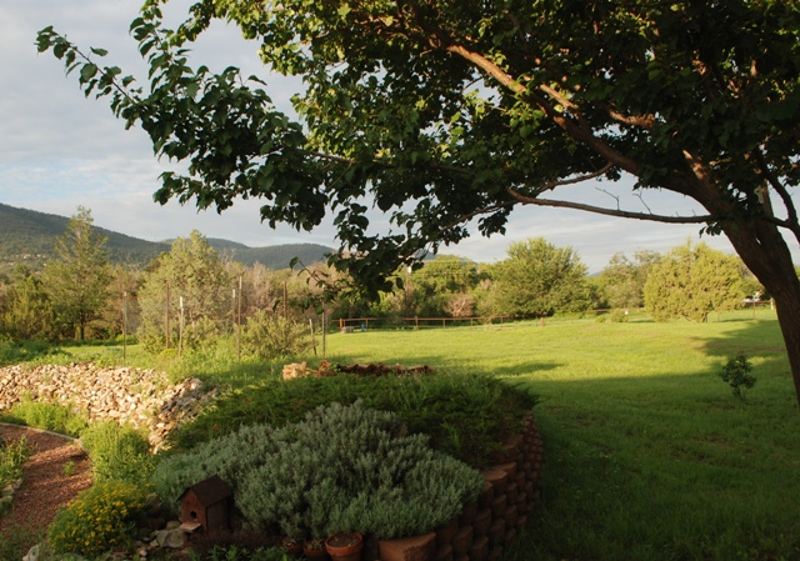
Nothing beats a shade tree in summer for plants and gardeners. This established Chinese apricot on the southwest corner or our home shades the patio, garden and some rooms and windows. We hope it provides fruit soon.
Trees also can shade other plants, helping to keep roots cool and moist, which saves some water in the landscape and opens up your ornamental or edible plant choices.
Place shade trees close enough to your house that you’ll receive some of the energy savings and comfort of the shade, keeping in mind the tree’s mature size and the direction of summer sun and shade.
Low Water Shade Trees
Desert willow (Chilopsis linearis)
This tree is is a striking, rainwater-only tree once established. Its shrubby, slightly smaller shape might be less effective at shading large areas or for providing cover for a picnic table, but it grows quickly the first few years. In fact, if you overwater it, the trunks grow too quickly and are susceptible to breakage from the wind. The orchid-like flowers attract hummingbirds. The sun lover may leaf out after other trees in spring, so don’t worry. It can reach heights of 20 feet and grows in zones 7 through 9.
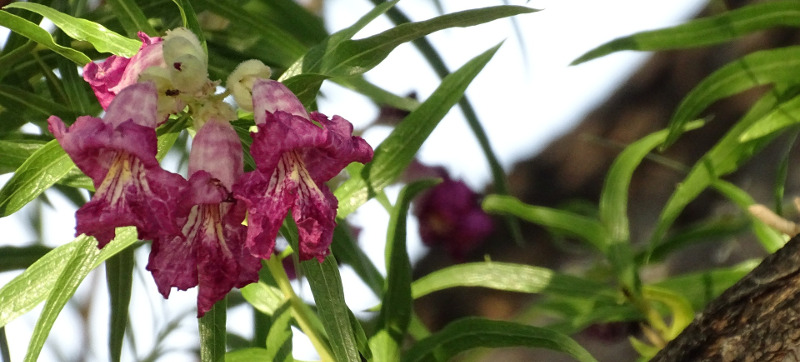
The desert willow has delicate leaves and orchid-like flowers. It will leave seed pods, but I’ve never found them to be messy.
Catalpa (Catalpa speciosa)
This tree has large, oval leaves and showy, almost tubular flowers. The tree can take heat and low to medium water. It grows to a height of about 60 feet in zones 4 through 8. Just beware of the Chitalpa (X Chitalpa tashkentensis), a hybrid cross of the catalpa and the desert willow. Its flowers are gorgeous and it’s fuller than the desert willow, but the plant is prone to a bacterial disease.
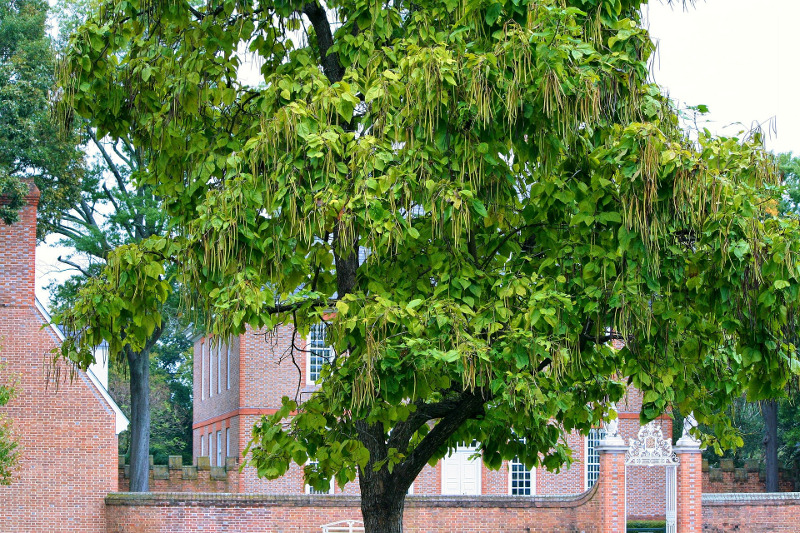
Close-up of catalpa leaves and flowers. Image by G. F. Russell and courtesy of the Smithsonian Plant Image Collection.
Velvet mesquite (Prosopis velutina)
This tree is a low-water shade tree that also leafs out late in spring, and rewards with sweet-smelling yellow flowers. It can reach 30 feet tall and 25 feet wide and is more cold hardy than some low-water choices, down to 5 degrees Fahrenheit. All of the mesquites are low-water users, surviving in the driest conditions.
Smoke tree (Cotinus coggygria)
This tree can take low-water conditions once established, but might require more water during hot summer months and while flowering. The flowers give the smoke tree its name; they’re feathery seed heads that burst open in summer. The foliage is just as attractive, though, with both green and purple colors, and a fall gold. The tree will only reach about 15 feet high, but it’s a great choice for xeric landscapes.
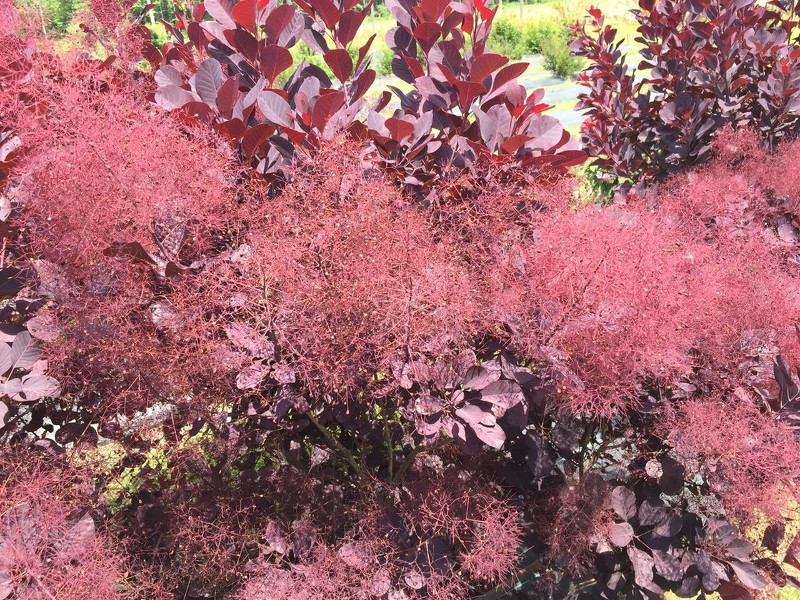
Smoke tree leaves and bloom. The leaves change color throughout the year and the blooms do have a smoky scent.
Blue spruce (Picea pungens)
Most evergreens, except Junipers, require at least medium water. The blue spruce is meant for cooler climates (Zones 3 through 6) and can grow to 50 feet. It comes in smaller cultivars that can survive at lower elevations and work better in a small yard or xeric landscape without taking over.
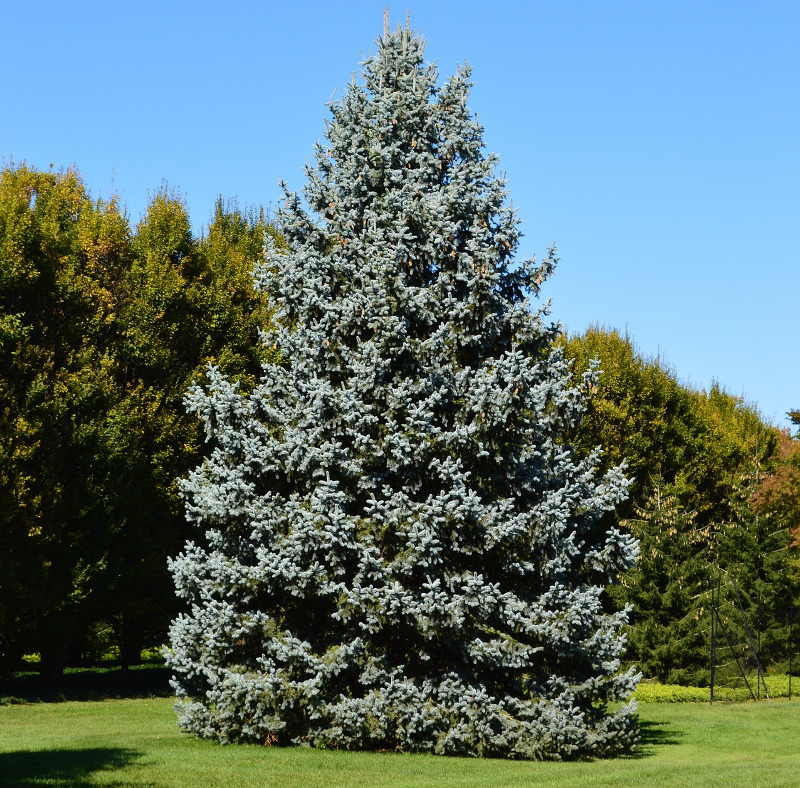
Jujube (Zizyphus jujuba)
For an edible choice, try the Jujube tree. Once established, it only needs a deep watering once a month. The tree also is called the Chinese date because it bears a sweet/sour date-like fruit for birds or people. The tree tends to spread and form groves, so it’s great for shade and wind screens. It can reach a height of 20 or 30 feet, however.
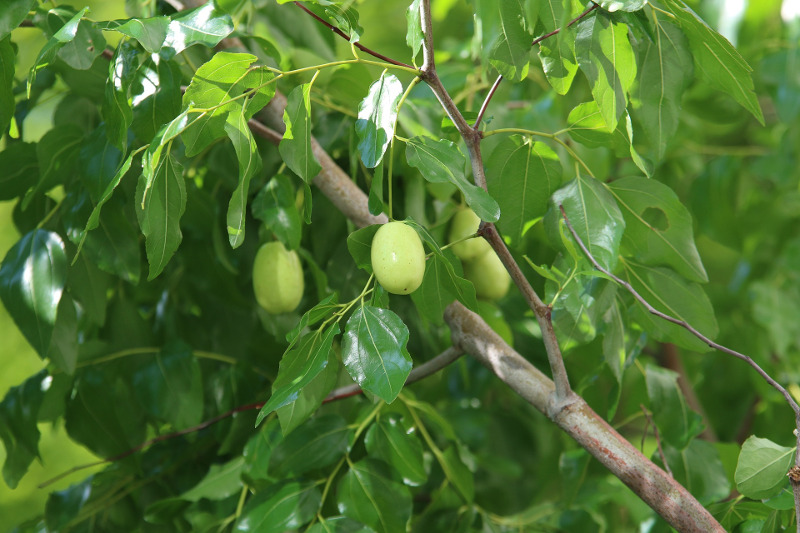
 |
Author Teresa Odle - Published 12-10-2020 |
